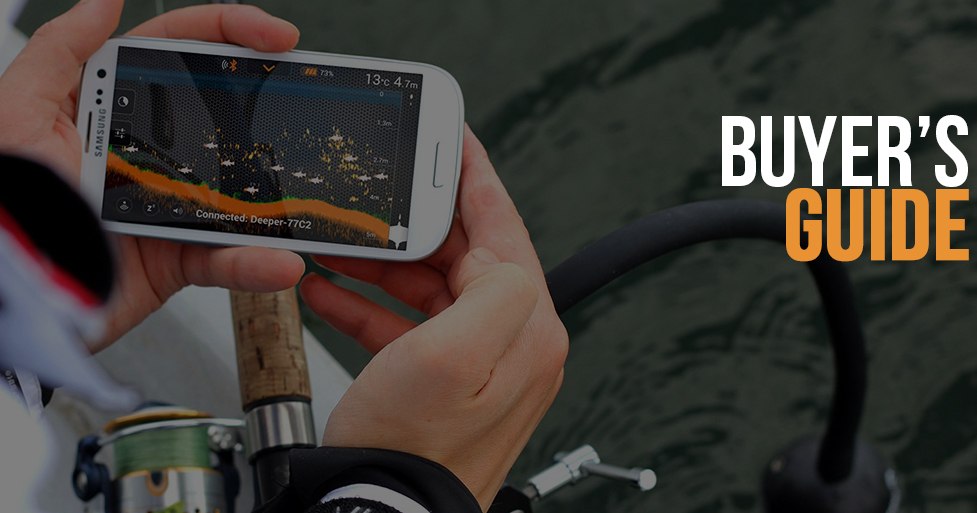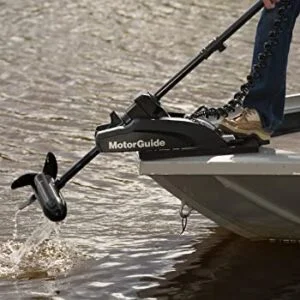
The first decision is where to mount the motor on your boat. You have several options:
Bow mount motors allow you to steer from side to side with ease, great for quick maneuvers and precision boat control. But they take up deck space, so aren't ideal for small boats.
Transom mounts attach to the stern and pivot the whole boat to change direction. This achieves basic steering, but with less agility. Watch for tangled lines when turning.
Engine mounts replace your main motor for ultra slow trolling speeds and variable speed control. But you'll be limited to a turtle's pace.
In summary, bow mounts provide the most responsive steering, while transom mounts offer simple directional control. Consider your boat size and need for agility vs open deck space. Now you understand the basics, let's move on to the details so you can find the perfect trolling motor setup.

Now that you've got the mount sorted, it's time to pick the muscle - the thrust specifications. This is simply the maximum push force of the motor, measured in pounds or kilograms of thrust. More thrust equals more powerful peaking speeds and better control in currents or wind.
How do you pick the right powerhouse? Here are the basics:
- Small boats under 16ft generally need 30-46 lbs thrust. This modest force allows good control without overpowering.
- Midsize boats of 16-20ft require 36-55 lbs thrust for responsive steering and speed. Popular for many fishing setups.
- Large boats over 20ft can utilize 55-112 lbs thrust to move their bulk and battle elements. Maximizes boat control.
Maximizes boat control. If you're keen on getting the most powerful motor for your boat, consider looking into the most powerful trolling motors.
Additionally, consider your fishing style. Slow current fishing from anchor needs less thrust. Frequently moving spots or fighting winds and current needs a strong motor.
While tempting to go overboard on power, an outsized motor on a small boat is inefficient and can make steering overly touchy. Consider an upgrade, but stick within recommended ranges for best performance. Be sure to determine what size trolling motor you need for your particular boat.
You've got the motor picked, now how do you drive this thing? Trolling motors offer a range of captain-friendly controls.
Pedal control uses foot pedals, leaving your hands free to fish. Step on the pedal to engage the motor and dial in speed and direction. Smooth as butter and intuitive as walking. Requires removal to stow the motor when not in use.
Hand operation utilizes a control handle connected by cable to the motor. Simply twist the handle to adjust speed and direction. Very responsive and allows precise boat positioning. Handle mounts out of the way when not needed.
Wireless remotes provide cord-free control from anywhere on the boat. Dial in adjustments on a handheld remote and drive from the front deck or wherever you roam. No tangled cables to reel in.
Autopilot locks in the heading using GPS and keeps your course without human touch. An extra set of hands that never gets tired. But comes at a higher price point.
Most anglers favor pedal or hand operation for their seamless control. But wireless adds flexibility for fishing different parts of the boat. Consider how much you need to roam vs. standing in one spot.
The shaft connects the motor head to the propeller, coming in standard or long sizes. This determines how deep your prop sits. Get your mind out of the gutter, we're talking boat parts here!
Standard shafts run 42-50 inches for general use. They keep the prop immersed but above the hull. Ideal for average fishing boats.
Long shafts measure 50-72 inches. Yes, size matters! The extended prop reach allows mounting the motor higher up. Prevents issues with props too close to hulls. Made for taller boats.
How to pick the right size? Consider:
- Mounting location height above water. Taller needs more length.
- Bow shape and running trim. Deeper hulls may require going long.
- Ensure the prop stays fully submerged when underway. Prop tips popping out means your shaft's too short.
- Avoid oversized shafts. Leave the prop vulnerable below the boat by only going as long as needed.
Getting the shaft length right ensures optimal prop depth and performance. Most boats are fine with standard, but measure carefully if going for the long length.
Trolling motors today come loaded with extras to take your fishing to the next level. Here are some top features to look for:
GPS anchoring uses satellite positioning to lock your boat precisely on a spot, like an anchor without the hassle. It counteracts drifting from wind or current to stay put.
Breakaway mounts allow the motor to detach when hitting obstacles, preventing damage. They can save the day when you’re not watching!
Variable speeds give you total control of pacing from barely moving to turbo boosts. Slow down for careful targeting or speed up when covering water.
Battery meters display remaining battery life and use. No more getting stranded with dead batteries. Advanced systems track total voltage usage too.
Other features like automatic stow and deploy, wireless connectivity apps, spot lock and more continue to evolve. Consider what would improve your fishing experience, but don’t overbuy on unnecessary gadgets.
While basic motors still get the job done, upgrades like precision GPS anchoring are game changers for serious anglers. Determine which features match your needs and budget to create the ultimate fishing machine.
Powering these motorized beasts takes some serious battery power. Here are the key factors to energize your trolling machine:
- Voltage ratings like 12v, 24v or 36v indicate battery strength. Higher voltage can deliver more thrust over time.
- Amperage ratings show sustained power output. Match amp hours to your motor's draw and runtime needs.
- 12v batteries are commonly used for small to midsize motors. 24-36v configs better power larger motors and extended runtimes.
- Use a dedicated battery just for your trolling motor. This prevents draining your main starting battery. Be sure to use the right size battery for your trolling motor based on expected power draw.
- Battery meters help monitor usage and remaining charge. No more getting stranded out of juice.
- Look for batteries designed for deep, consistent power output to handle trolling demands. AGM and lithium batteries work well.
- Carefully recharge batteries after each use to maximize their lifespan. Use recommended chargers.
Determining the right battery solution ensures reliable, long lasting power for your trolling setup. Consider voltage needs, expected runtimes per charge, and smart power monitoring to get the most from your batteries. Don't let weak batteries leave you dead in the water.
With all the options out there, which trolling motors consistently take the cake? Here are some top performers:
Minn Kota builds reliable, powerful motors across budget ranges. The Riptide ST has excellent 55lb thrust starting at $799.99. A workhorse transom mount motor. For other considerations from this brand, take a look at our guide to the best Minn Kota trolling motors.
MotorGuide's Xi5 offers wireless connectivity and GPS anchoring for $1899.99. Latitude adjustments keep the prop immersed. Excellent performance but at a premium cost.
For smaller boats, Newport Vessels' 47lb Edge starts at only $389.99. A basic transom mount with good power and steering.
Garmin's Force 48lb runs $1699.99 using advanced sonar and mapping. Ideal for precise fishing from kayaks and small crafts.
On the premium end, Rhodan's Trolling Motors has all the bells and whistles starting at $2,399.99. Built for big water trolling and all day runtimes.
Consider your boat size, fishing style and budget. Small bass boats can use lower cost 55 lb transom mounts. Bigger crafts for open water need 70 lb+ bow mounts with long runtimes. Read reviews to find the right match.
You picked the motor, now let's get it mounted right to avoid issues down the line:
- Carefully follow manufacturer directions for securing the mount and tightening bolts to the proper torque. Don't risk a loose mount coming free.
- Make wiring connections waterproof and strain relieved. Use marine-grade connectors and sealants. Check for chafe points.
- Use a dedicated circuit breaker or fuse for the trolling motor wiring. This protects from shorts and overload.
- Keep wiring neat and out of harm's way. Too much slack in the wires risks tangling and damage.
- Install a battery box secured nearby to safely house your trolling battery. Use heavy marine grade battery cables.
- Test all functions after installation - steering, speed control, electronics. Make adjustments before hitting the water.
- Do a sea trial before fishing to confirm the motor performs as expected underway. Finetune the mount height and heading.
Taking the time to mount and setup your trolling motor correctly will pay off every time you hit the water. Don't cut corners - a loose mount or flaky wiring can ruin your day of fishing. It's a good idea to learn how to wire a 24V trolling motor.